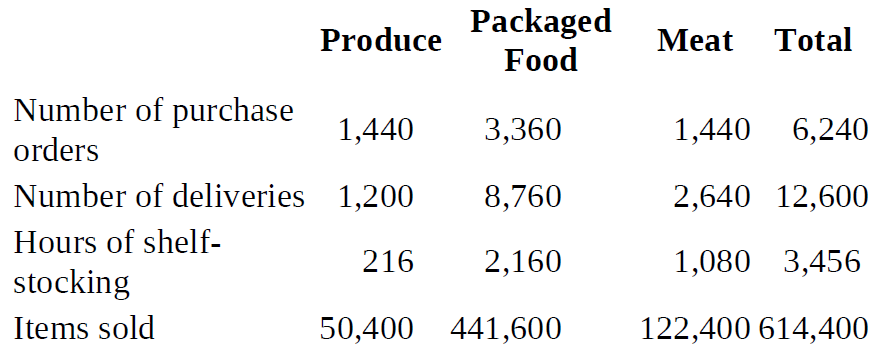Hipercor is a grocery company with stores throughout Spain. Suppose the company is planning an expansion of
Question:
Hipercor is a grocery company with stores throughout Spain. Suppose the company is planning an expansion of its store in central Madrid. A preliminary analysis has shown the Packaged Food department to be the most profitable, so the company plans to increase its space the most.
Assume that the Madrid store has just three departments: Produce, Packaged Food, and Meat. The most recent annual report for the store showed sales of Є3,283,200, which generated a gross margin of Є883,200. Sales and gross margins of the three departments were as follows:

In addition to cost of products sold, the store has Є720,000 of support costs, so operating income is Є883,200−Є720,000=Є163,200. Hipercor currently uses an accounting system that uses cost of products sold as a cost-allocation base for allocating support costs.
Ramon Flores, controller of Hipercor, recently attended a seminar on activity-based costing. He suggests that Hipercor management should undertake further analysis before deciding which product gets the largest increase in space in the expansion. He has asked you, his assistant, to lead this analysis.
1. The starting point of your analysis is to determine product profitability under the existing cost accounting system. Compute the operating income and the operating income as a percentage of sales for each department using Hipercor’s existing system. Use this information to assess the relative profitability per dollar of sales of each of the three departments.
2. Flores asks you next to develop product costs using an activitybased accounting system. You determine that there are five major activities, each with a different cost driver to be used as a costallocation base:
1. Ordering—Placing orders for purchases
2. Delivery—Physical delivery and receipt of merchandise
3. Shelf-stocking—Stocking of merchandise on store shelves, including ongoing restocking
4. Customer support—Assistance to customers, including checkout and bagging
5. Produce monitoring—Constantly checking on the stacking and freshness of produce The cost drivers for each activity are:
Ordering ..............................................................Number of purchase orders
Delivery ............................................................................Number of deliveries
Shelf-stocking ................................................................Hours of stocking time
Customer support .........................................................Number of items sold
Produce monitoring Direct trace to the Produce Department
You have determined the following information about the cost drivers:

The total cost of each activity was:
Ordering ...................................Є124,800
Delivery .......................................201,600
Shelf-stocking .............................138,240
Customer support ......................245,760
Product monitoring .......................9,600
Total ...........................................Є720,000
Using these data and activity-based costing, calculate the operating income and operating income as a percentage of sales for each product. (For example, note that each purchase order costs Є124,800÷6,240=Є20 to process.)
3. Propose a strategy for expansion. Which information is most useful, that based on the current costing system or that based on the activity-based costing system? Why? What additional information would you like to have before making a more definitive recommendation on an expansion strategy?
Step by Step Answer:

Management Accounting
ISBN: 978-0132570848
6th Canadian edition
Authors: Charles T. Horngren, Gary L. Sundem, William O. Stratton, Phillip Beaulieu





